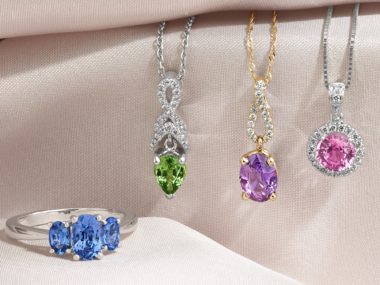The ability to change colors, whether it is a reptile or a diamond, is always something that amazes me. I have always tried, given my degree in marketing, to learn about certain groups of people and their habits. The best way to observe others is when they are unaware that you are watching. This is not meant to be ‘sneaky’. It is just that, when most people sense they are being observed, they change their natural habits to perform in a manner that they think they should be acting.
In a foreign country or even in one of our U.S. stores where I want to watch the customers, I just sort of disappear from view. Standing in my corner, I can see how they react, to salespeople, to product displays, to all different things that they are exposed to. Like the chameleon reptile, I like to be inconspicuous and blend in with the surroundings. I know this may be hard to fathom, given my very well known public persona. But it’s true.
Over 30 years ago, I came across the first (and only) diamond that I wanted to own as a personal collector. And it was when I heard it referred to, albeit in French, as ‘chameleon’ that my interest was piqued.
Sitting in the restaurant downstairs in the Diamond Exchange in Antwerp, I chanced upon this stone. The restaurant there is not fancy, to say the least. But the food itself is decent. Seating is communal, at big round tables that seat around 10 people. Anyhow, we were a group of 4, and found a party of 5 other diamond dealers seated. It happens we were all good friends, but they continued their conversation (in French, which I happen to be fluent in) and the four of us continued to discuss our business issues in English. As we were all friends, it wasn’t rude for me to join in the other conversation, as I thought that I overhead something very strange or maybe I was concerned that my French wasn’t that good!
My one friend is talking about a stone that he just got, as a broker, and was trying to sell. He would get a 1% commission if he sold it. He told me that the cutter (owner of the stone) thought he had a beautiful fancy green diamond when he bought the rough and cut it. He then put it in his safe for a while. When he took it out, he was shocked to find the stone was no longer green, but had a brown color. Thinking he was getting senile, he continued to stare at the stone, and within two minutes the stone had returned to its green that he was familiar with. Now the guy thinks he is going crazy! Anyhow, he sends the stone to the GIA, and gets a certificate calling the color change process a ‘phenomenon’. The stone has no radiation issues, and this is completely natural; and extremely rare. By now I am totally intrigued, and ask if I may see the stone after lunch in my office, where I know what effect the natural light has. We only buy diamonds with natural light; we never turn a light on in the buying room when we are buying stones. My broker friend then pulls what I perceived to be the height of an insult. He asks me if I am serious about buying the stone. In normal circles this is nothing, but to a diamond dealer we operate with serious rules of honor and would never waste someone’s time if we weren’t seriously intent on purchasing an item. The real issue was a point I missed.
It takes just a minute or two for the stone to turn green. But the diamond must be left in total darkness for three days before it loses its green and goes to brown. That is why the stone cutter never knew what he had when he bought the rough. Equally, that is why the broker was correct in asking me if I were serious…he would have to wait three days to show the stone to someone else if I didn’t buy it.
So, if you want to see a two-carat, flawless, round diamond, change from brown to green, check out our video. And if you wonder why I am attracted to the stone, it is the chameleon aspect. Enjoy!
